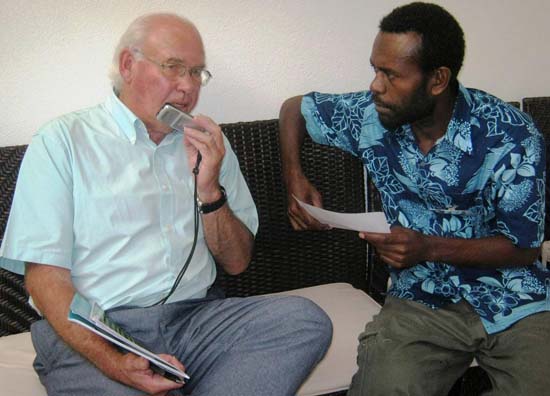
FIJI >> Fiji National University
>> University of the South Pacific
NZ >> AUT University (Pacific J-studies)
>> Other NZ J-schools
PNG >> Divine Word University
>> University of PNG
SAMOA >> National University of Samoa
SOLOMON ISLANDS >> Solomon Islands College for Higher Education
TONGA >> Tonga Institute for Higher Education
VANUATU >> Vanuatu Institute of Technology
*** PACMAS
Located west of Fiji, Vanuatu is famed for attractive islands, active volcanoes and Melanesian culture, especially on Tanna.
Vanuatu includes 13 larger islands and about 70 smaller ones. Most are mountainous (volcanic in origin, some active), and covered in lush rainforest. Many are protected by coral reefs.
The islands are subject to devastating cyclones and hurricanes.
When Captain James Cook sailed through the chain in 1774, chartering and naming many of the islands, he collectively called them the New Hebrides, after the islands off the west coast of Scotland. They were administered jointly by Britain and France for 73 years. Independence was won in 1980, along with its new name, Vanuatu, and a new constitution.
The local economy still revolves around agriculture and fishing, but tourism is a fast-growing industry and liberal tax laws have made Vanuatu a popular offshore financial centre.
Vanuatu Institute of Technology is the largest provider of formal Technical, Vocational Education and Training (TVET) in Vanuatu. The Institute has a large main campus in Port Vila and two smaller provincial centres in SANMA province and TAFEA province.
Official Name: Republic of Vanuatu
Population: 209,000
Capital City: Port Vila (39,300)
Languages: English, French, Pidgin, and numerous local dialects
Official Currency: Vatu
Religions: Presbyterian, Anglican, others
Land Area: 12,190 sq km (4,707 sq miles)
Country profile
Google Map



